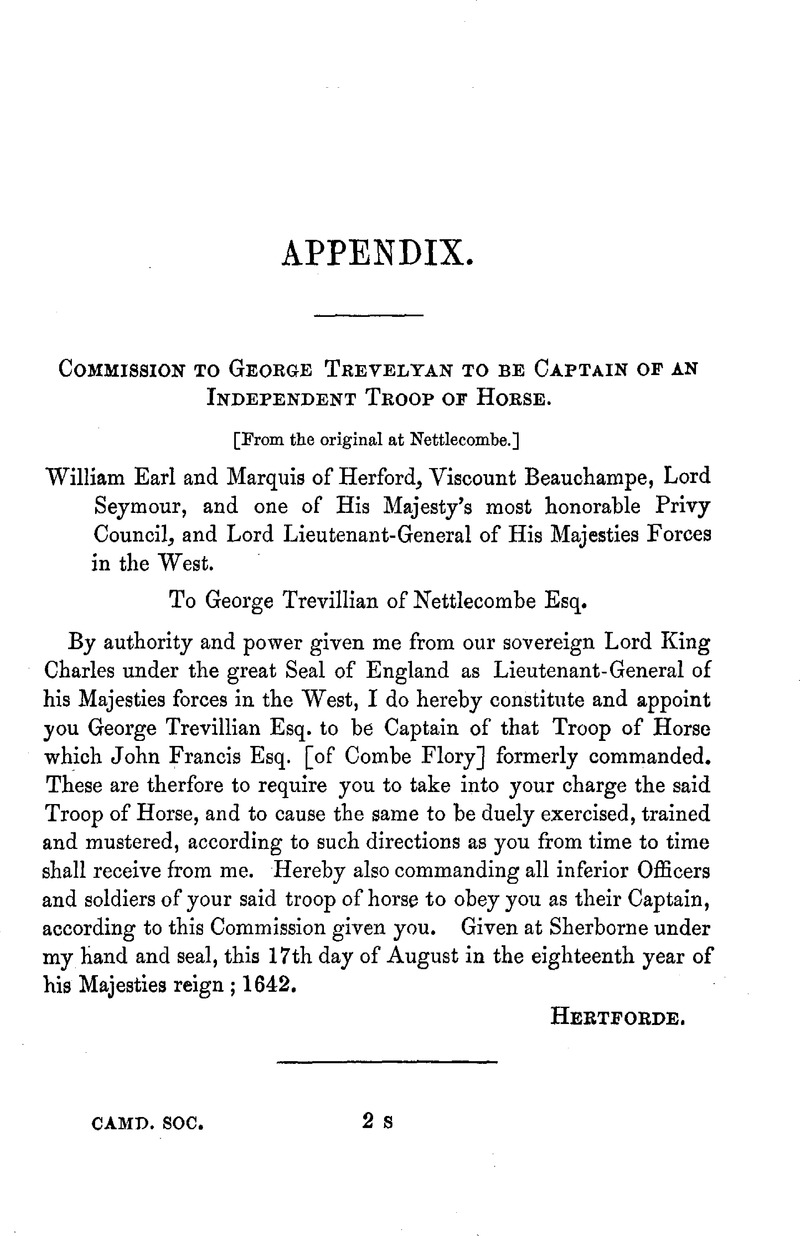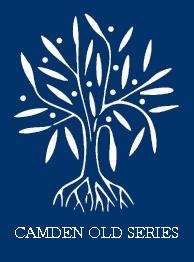No CrossRef data available.
Article contents
Appendix
Published online by Cambridge University Press: 24 December 2009
Abstract

- Type
- Appendix
- Information
- Copyright
- Copyright © Royal Historical Society 1872
References
page 314 note a The Marquis of Hertford was Lieutenant-General of His Majesty's forces in the West.
page 317 note a See the preceding Paper.
page 318 note a In a separate official abstract of these proceedings this is thus explained, “ that he hath been under the Parliament's power for this year past,” that is, that he has resided during that period in a part of the country which was subject to their power.
page 318 note b Anthony Buller of Weybridge in Surrey, fifth son of Sir Richard Buller of Shillingham, M.P. for Cornwall. Anthony was a Colonel in the army, Governor of Scilly, and M.P. for Callington. He was baptized at St. Stephen's, Saltash, 14th November, 1613 ; and his will was dated 16th February 1677.
page 322 note a The actual sum of the several figures is £410, but as £510 is the sum stated at page 321 to hare been owing by George Trevelyan, that, no doubt, is right, and some of the particulars have, with the inaccuracy usual in affidavits, been omitted in copying.
page 324 note a Horse beasts for draught horses is now obsolete, although it was in use within the memory of persons still living. Horned cattle, ordinarily called beast, were used on every farm in West Somerset for draught, and when horses were employed in this way, they were called horse beasts. The same term occurs in a will dated June 30, 1651, in which John Burnard of Colyton (Devon) gives to Benedict, his wife, “ six of my best cows, two horse beasts, and twenty ewes.”
page 326 note a andirons, commonly called Dogs, from tho figure of a dog's head on the top, were used to support the wood on either side of the large open fireplaces of former days. There are two in the old hall at Nettlecombe, fronted, not with dogs, but with men in armour, carrying shields with the arms of the fourth John Trevelyan, quartering, in right of his wife, those of Cockworthy and Champernowne; which are, no doubt, the identical pair referred to. They were probably cast in Sussex, and are a creditable specimen of the state of the art in the early part of the sixteenth century. Crippers, or Creepers, are described in Halliwell's Dictionary of Archaic and Provincial Words, as “ small low irons, in a grate, between the andirons.” Both andirons and creepers are still used, with the same names, in the United States, having been introduced by the Pilgrim Fathers, and being suited to the wood fires in general use.
page 328 note a This is evidently an official reference to some other book or document.
page 329 note a Pl, parcel, for “ part.”


